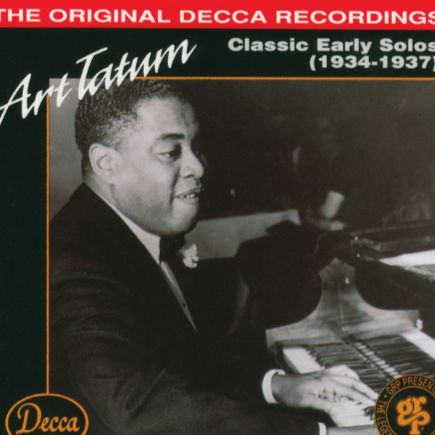Liza: entre Broadway flamboyant et virtuosité jazz
Composée par George Gershwin sur des paroles d’Ira Gershwin et de Gus Kahn, Liza (All the Clouds’ll Roll Away) fait son entrée remarquée le 2 juillet 1929 dans la comédie musicale Show Girl, produite par Florenz Ziegfeld. Sur scène, Ruby Keeler – sous les traits de Dixie Dugan – en dévoile la première version, accompagnée par l’orchestre de Duke Ellington.
Mais c’est un moment imprévu qui marquera les esprits: lors de la première à Boston, Al Jolson, chanteur vedette et époux de Keeler, se lève spontanément au troisième rang et entonne un refrain de la chanson, déclenchant la surprise générale, y compris celle de Gershwin lui-même. Jolson enregistre Liza quelques jours plus tard, et son interprétation atteint rapidement la neuvième place des classements de l’époque.
Comme beaucoup d’œuvres signées Gershwin, Liza s’impose très vite comme un standard du jazz. Sa mélodie vive et son rythme entraînant séduisent les musiciens, qui en explorent les possibilités avec enthousiasme. Son écriture, à la fois exigeante et jubilatoire, continue de stimuler les interprètes, tout en offrant au public une joie musicale immédiate.
L’éblouissante virtuosité de Art Tatum
Enregistrée en solo à New York le 24 août 1934, la version de Liza (All the Clouds’ll Roll Away) par Art Tatum reste l’un de ses chefs-d’œuvre et un jalon dans l’histoire du jazz, témoignage le plus saisissant de son génie précoce. Son interprétation déploie une énergie irrésistible: un tempo vif, articulé avec une précision métronomique, mais jamais mécanique, et un rebond rythmique qui rappelle autant l’élan de Fats Waller que l’agilité d’un violoniste virtuose.
Ce qui frappe avant tout, c’est la densité du jeu. Tatum superpose lignes mélodiques, contrechants et batteries d’accords enrichis, créant une texture quasi orchestrale. Chaque mesure devient un espace de transformation où la mélodie originale apparaît, disparaît, se diffracte puis revient dans une clarté lumineuse. L’usage de substitutions harmoniques — encore rare à cette époque — révèle son instinct visionnaire. Il modifie le parcours tonal avec une audace qui annonce déjà les innovations du bebop.
L’interprétation conserve pourtant une élégance constante. Le toucher de Tatum, d’une netteté cristalline, permet une articulation fluide même dans les passages les plus vertigineux. Ses traits rapides, souvent décrits comme ‘impossibles’, ne sont jamais gratuits et participent d’une dramaturgie sonore où tension et relâchement se succèdent avec une maîtrise consommée.
Liza: entre el esplendor de Broadway y la virtuosidad del jazz
Compuesta por George Gershwin con letra de Ira Gershwin y Gus Kahn, Liza (All the Clouds’ll Roll Away) hizo su aparición el 2 de julio de 1929 en el musical Show Girl, producido por Florenz Ziegfeld. En escena, Ruby Keeler — en el papel de Dixie Dugan — interpreta la canción por primera vez, acompañada por la orquesta de Duke Ellington.
Pero fue un momento inesperado el que quedó grabado en la memoria colectiva: durante el estreno en Boston, el famoso cantante y esposo de Keeler, Al Jolson, se levantó espontáneamente de su asiento en la tercera fila y cantó un estribillo de la canción, sorprendiendo tanto al público como al propio Gershwin. Jolson grabó Liza pocos días después, y su versión alcanzó rápidamente el noveno puesto en las listas de éxitos de la época.
Como muchas obras firmadas por Gershwin, Liza se consolidó pronto como un estándar del jazz. Su melodía vivaz y su ritmo contagioso cautivaron a los músicos, que no tardaron en explorar sus posibilidades con entusiasmo. Su escritura, exigente y festiva a la vez, sigue estimulando a los intérpretes y ofreciendo al público una alegría musical inmediata.
La deslumbrante virtuosidad de Art Tatum
Grabada en solo en Nueva York el 24 de agosto de 1934, la versión de Liza (All the Clouds’ll Roll Away) de Art Tatum sigue siendo una de sus obras maestras y un hito en la historia del jazz, el testimonio más impresionante de su genio precoz. Su interpretación despliega una energía irresistible: un tempo vivo, articulado con una precisión metronómica pero nunca mecánica, y un rebote rítmico que recuerda tanto el impulso de Fats Waller como la agilidad de un violinista virtuoso.
Lo que impacta ante todo es la densidad del juego. Tatum superpone líneas melódicas, contracantos y baterías de acordes enriquecidos, creando una textura casi orquestal. Cada compás se convierte en un espacio de transformación donde la melodía original aparece, desaparece, se fragmenta y luego reaparece con una claridad luminosa. El uso de sustituciones armónicas —todavía poco frecuente en aquella época— revela su instinto visionario. Modifica el recorrido tonal con una audacia que ya anuncia las innovaciones del bebop.
Aun así, la interpretación mantiene una elegancia constante. El toque de Tatum, de una nitidez cristalina, permite una articulación fluida incluso en los pasajes más vertiginosos. Sus frases veloces, a menudo descritas como ‘imposibles’, nunca son gratuitas y participan de una dramaturgia sonora en la que tensión y relajación se suceden con una maestría consumada.
Liza: tra lo splendore di Broadway e la virtuosità del jazz
Composta da George Gershwin su testi di Ira Gershwin e Gus Kahn, Liza (All the Clouds’ll Roll Away) debutta il 2 luglio 1929 nel musical Show Girl, prodotto da Florenz Ziegfeld. In scena, Ruby Keeler — nei panni di Dixie Dugan — ne propone la prima esecuzione, accompagnata dall’orchestra di Duke Ellington.
Ma è un episodio inatteso a segnare la serata: durante la prima a Boston, il celebre cantante Al Jolson, marito di Keeler, si alza improvvisamente dalla terza fila e intona un ritornello del brano, sorprendendo il pubblico e lo stesso Gershwin. Jolson inciderà Liza pochi giorni dopo, e la sua interpretazione raggiungerà rapidamente la nona posizione nelle classifiche dell’epoca.
Come molte composizioni firmate Gershwin, Liza si impone rapidamente come uno standard del jazz. La sua melodia brillante e il ritmo trascinante conquistano i musicisti, che ne esplorano con entusiasmo le potenzialità. La scrittura, tanto impegnativa quanto esuberante, continua a stimolare gli interpreti e a regalare al pubblico un’immediata gioia musicale.
L’abbagliante virtuosismo di Art Tatum
Registrata in solo a New York il 24 agosto 1934, la versione di Liza (All the Clouds’ll Roll Away) di Art Tatum rimane uno dei suoi capolavori e una pietra miliare nella storia del jazz, la testimonianza più impressionante del suo genio precoce. La sua interpretazione dispiega un’energia irresistibile: un tempo vivace, articolato con precisione metronomica ma mai meccanica, e un rimbalzo ritmico che richiama tanto l’impulso di Fats Waller quanto l’agilità di un violinista virtuoso.
Ciò che colpisce soprattutto è la densità del gioco. Tatum sovrappone linee melodiche, controcanti e batterie di accordi arricchiti, creando una tessitura quasi orchestrale. Ogni battuta diventa uno spazio di trasformazione in cui la melodia originale appare, scompare, si frantuma e poi ritorna con una chiarezza luminosa. L’uso di sostituzioni armoniche —ancora raro all’epoca— rivela il suo istinto visionario. Modifica il percorso tonale con un’audacia che annuncia già le innovazioni del bebop.
L’interpretazione conserva tuttavia un’eleganza costante. Il tocco di Tatum, di una nitidezza cristallina, permette un’articolazione fluida anche nei passaggi più vertiginosi. I suoi passaggi rapidi, spesso descritti come “impossibili’, non sono mai gratuiti e contribuiscono a una drammaturgia sonora in cui tensione e distensione si alternano con maestria assoluta.
Liza: between Broadway brilliance and jazz virtuosity
Composed by George Gershwin with lyrics by Ira Gershwin and Gus Kahn, Liza (All the Clouds’ll Roll Away) made its notable debut on July 2, 1929, in the Broadway musical Show Girl, produced by Florenz Ziegfeld. On stage, Ruby Keeler — performing as Dixie Dugan — introduced the song, accompanied by Duke Ellington’s orchestra.
But it was an unscripted moment that stole the spotlight: at the Boston premiere, star singer and Keeler’s husband, Al Jolson, spontaneously rose from the third row and sang a chorus of the song, to the astonishment of the audience — and of Gershwin himself. Jolson recorded Liza a few days later, and his version quickly climbed to number nine on the charts.
Like many Gershwin works, Liza soon became a beloved jazz standard. Its lively melody and infectious rhythm attracted musicians eager to explore its full potential. With writing that is both technically demanding and exuberantly joyful, Liza continues to inspire performers and bring immediate musical delight to listeners.
The dazzling virtuosity of Art Tatum
Recorded solo in New York on August 24, 1934, Art Tatum’s version of Liza (All the Clouds’ll Roll Away) remains one of his masterpieces and a landmark in jazz history, the most striking testament to his early genius. His interpretation unleashes irresistible energy: a brisk tempo articulated with metronomic precision yet never mechanical, and a rhythmic bounce that recalls both the drive of Fats Waller and the agility of a virtuoso violinist.
What stands out most is the density of his playing. Tatum layers melodic lines, countermelodies, and clusters of enriched chords, creating an almost orchestral texture. Each measure becomes a space of transformation in which the original melody appears, disappears, fractures, and returns with luminous clarity. His use of harmonic substitutions—still uncommon at the time—reveals his visionary instinct. He alters the tonal path with an audacity that already foreshadows the innovations of bebop.
Yet the interpretation maintains a constant elegance. Tatum’s touch, crystal-clear and impeccably controlled, allows for fluid articulation even in the most dizzying passages. His rapid figures, often described as ‘impossible’, are never gratuitous and contribute to a sonic dramaturgy where tension and release follow one another with consummate mastery.


